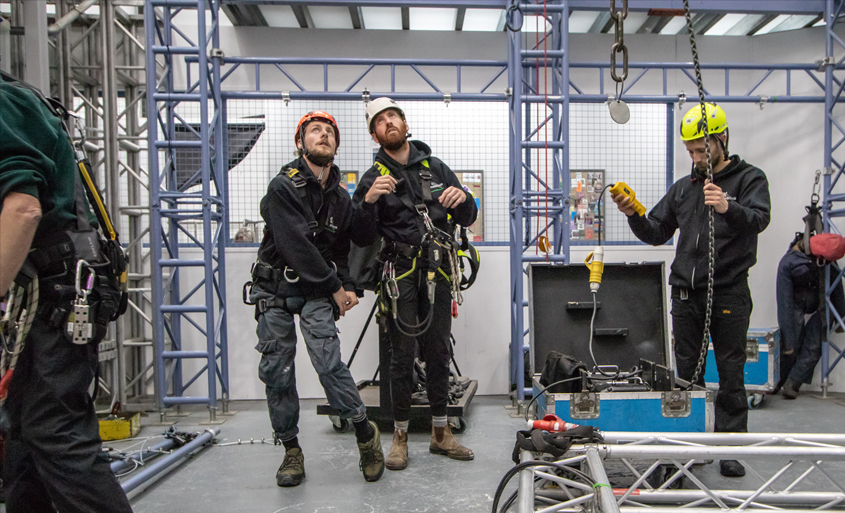
Getting into Rigging
There are many routes into the rigging industry. Here is summary of some of the most common routes into the rigging industry which are currently available.
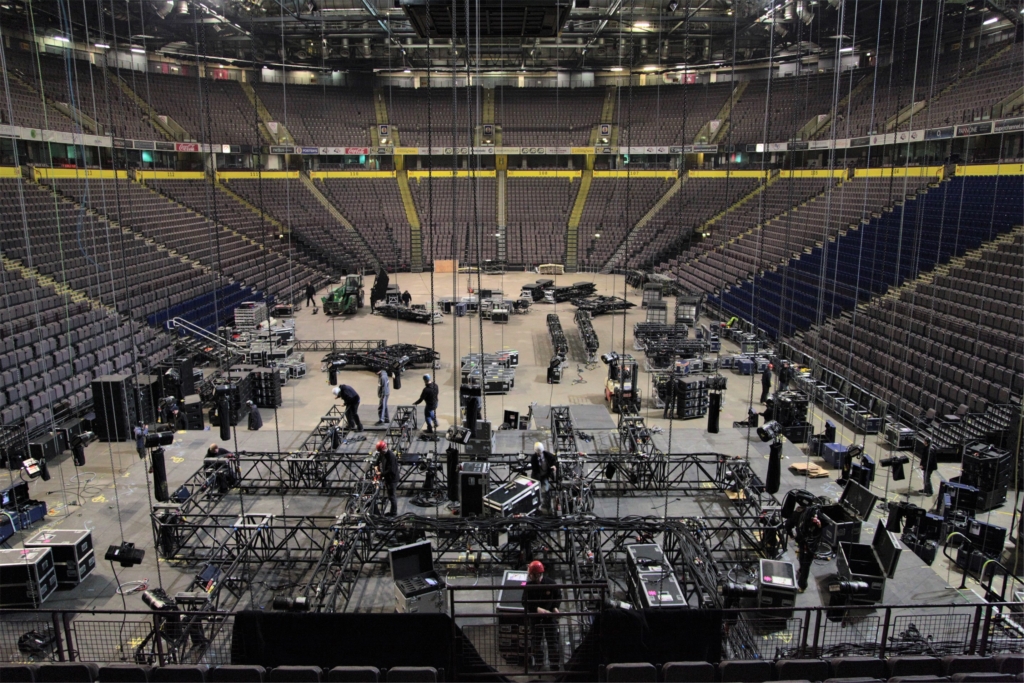
What is Live Event Rigging?
Live event rigging is a vast industry, with many areas of specialist expertise. For this article, we will focus on arena rigging, informally known as ‘rock and roll’ rigging. At many large-scale events, the production team for the performer will want the special effects, lighting and sound equipment to hang from the roof. Each venue roof has its own challenges in terms of connection points and access, so rigging is required to connect the production equipment to the roof. Not only does this take complex planning to ensure that the load is safely distributed across the roof, it also takes team work and speed to ensure that the rigging is connected and installed safely.
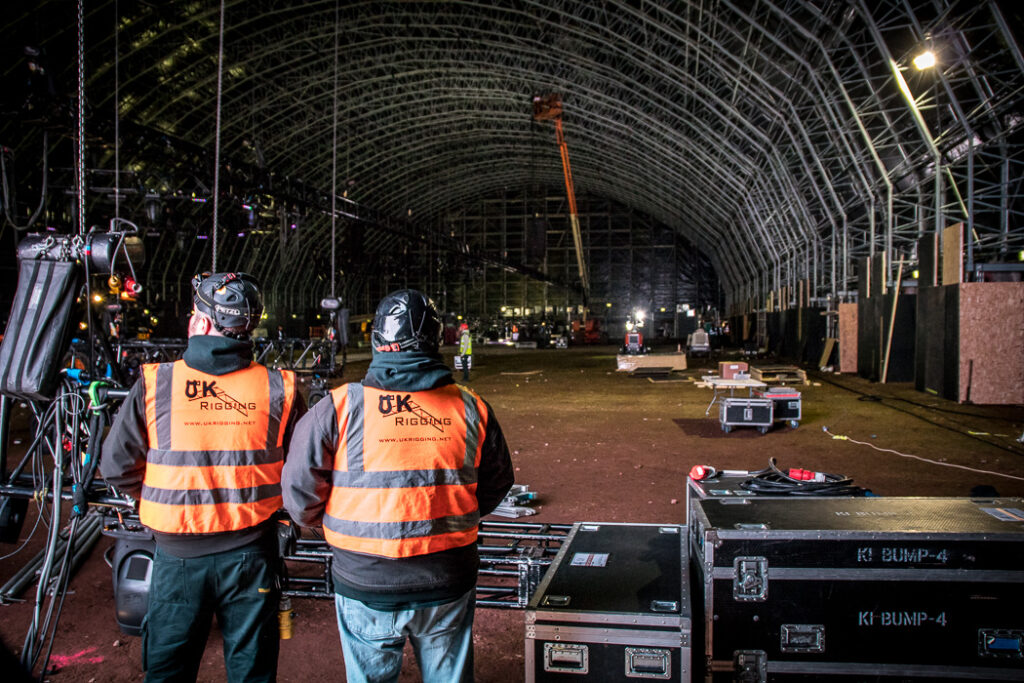
What is it like to be a rigger?
More often than not, each rigging point needs to be connected to the roof beams by hand. Teams of riggers will be working in the roof space using a variety of safety equipment, to ensure they remain safe whilst each connection is made correctly.
Live event rigging is a vital part of every production. Riggers must often climb around on beams 30m in the air above an arena floor. Arena rigging usually requires working at height within a wide range of venues, manual handling, extensive travel and working during antisocial hours.
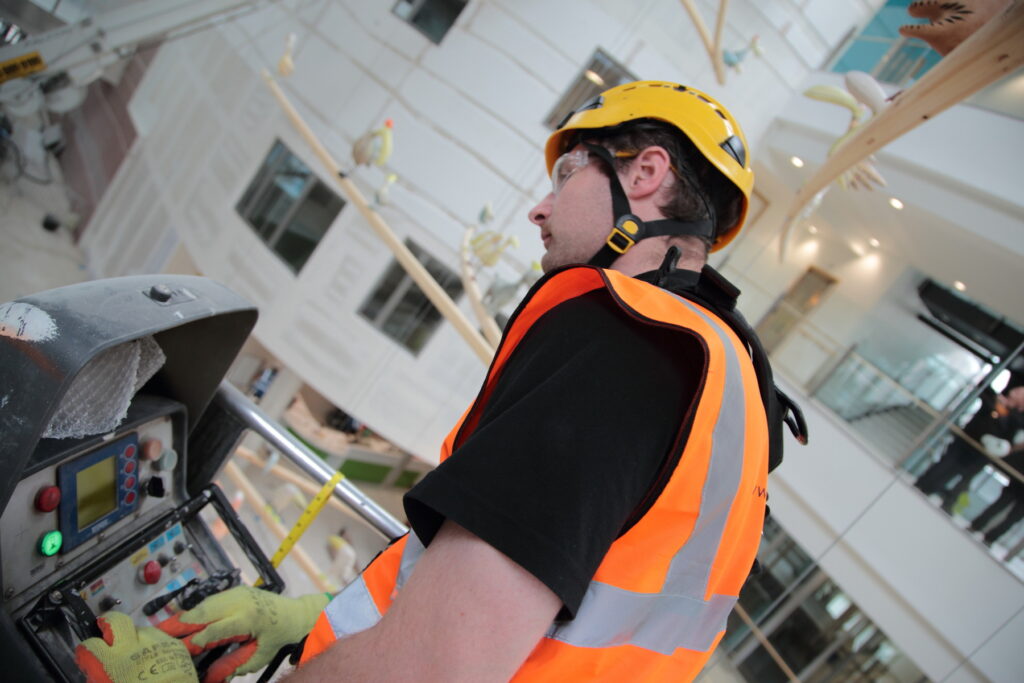
What is required?
Typically, a rigger needs:
- Training – knowledge should be gained through learning and formal courses for example the Three-Day Rigging for the Entertainment Industry Course.
- Experience – practical skills through real-life rigging work must be gained in order to become a competent rigger, ideally at a wide range of venues.
- Qualification – in order to work as a rigger at height, many companies require that you hold the NRC rigging qualification. Until that point, you will need to work on the ground, or as a trainee under supervision.
- Contacts – many riggers work on a freelance basis, being a successful rigger relies upon building a good reputation with a variety of contacts.
- Equipment – working as a freelance rigger will have different kit requirements depending on where you’re working, and whether you’re working on the ground or at height.
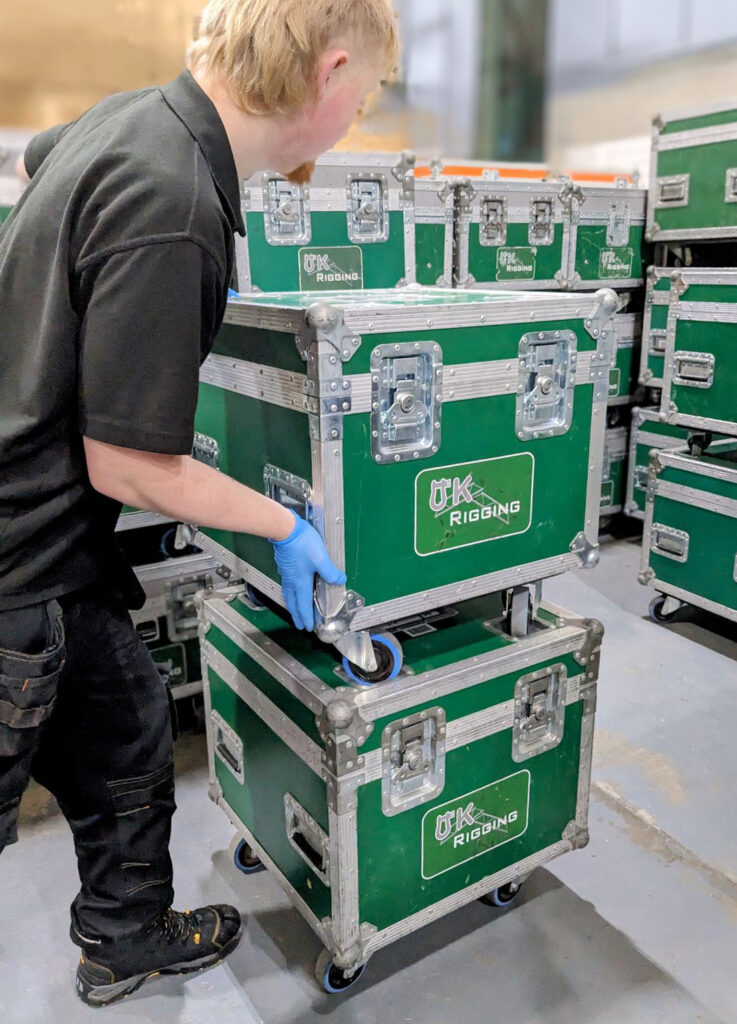
Routes into the Rigging Industry
There are a number of routes to becoming a rigger, here are a few of the most accessible routes:
- Project X and the RAS – a structured freelance experience scheme
- Self-learning – shadowing
- PLASA Trainee Rigger Scheme – a framework provided by PLASA
- Employment or apprenticeship within the entertainment industry
More information on all of these routes is available below.
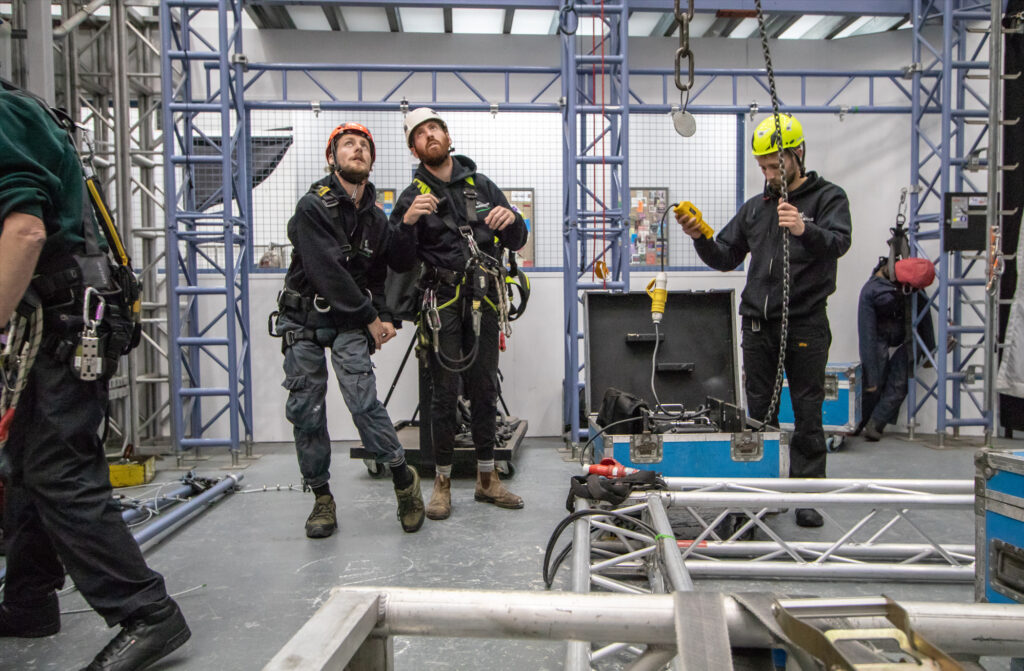
Project X and the Rigging Assistant Scheme (RAS)
Project X was an exciting and successful pilot scheme developed by UK Rigging in 2023. The scheme was designed by UK Rigging to explore new and innovative ways to address the current rigger shortage by supporting those who wish to enter the rigging industry on a freelance basis. The scheme offered financial support, planned training, mentoring and rare access to on-the-job experience. Due to the success of the pilot, UK Rigging has now launched a revised scheme known as the Rigging Assistant Scheme (RAS) in 2024.

Employment & Apprenticeship
Many rigging companies offer training as part of an employed job role. An employed position may take longer to achieve your NRC, but offers many other benefits. For example, it can provide financial security, extra support and a deeper confidence with equipment. Being involved in the wider workings of a rigging company can expose you to a wide variety of knowledge and experience to provide a better foundation for a long and successful rigging career.
The type of job role available varies at each company; some companies specifically offer rigging apprenticeships; others offer a chance to train alongside other duties such as a warehousing job role.
UK Rigging does not currently offer a rigging apprenticeship. However, employees are offered the chance to train and work as a rigger alongside the warehouse operative role. As part of your training, you’d be working alongside NRC riggers, project managers and company directors on a wide range of projects, installations and gigs. Although you’d be based in the warehouse working full time, you’d be trained up as a rigger over a few years. This is a slightly longer route into rigging but provides an incredibly in-depth level of knowledge, broad experience within the industry, and embeds you within the company.
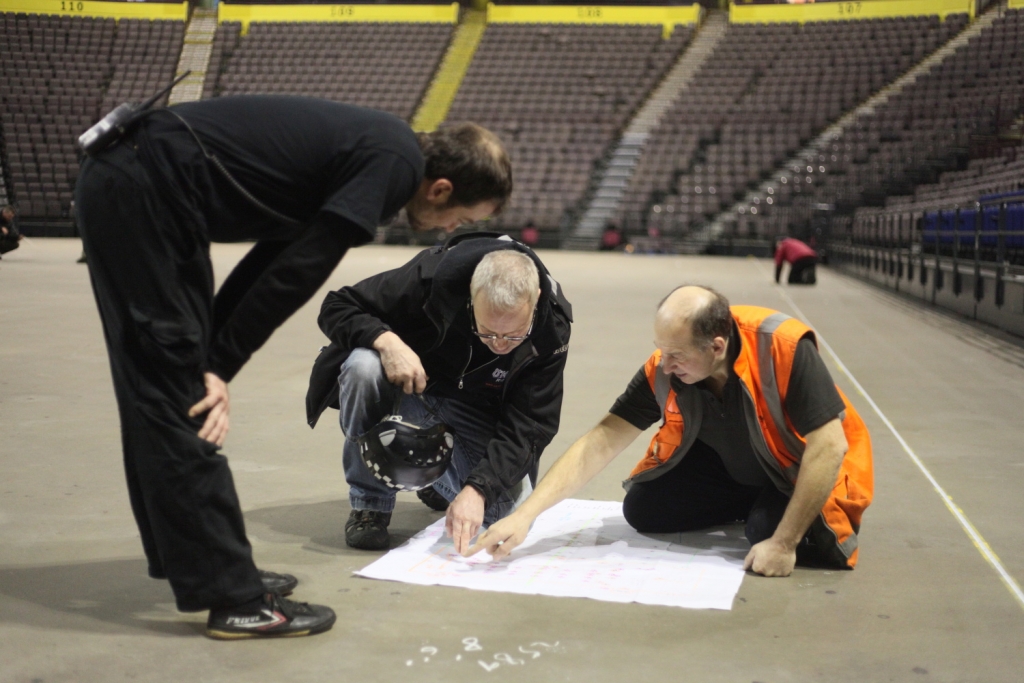
Self Learning
Through having good contacts and a good attitude to work (often for free!), some people are able to find their way into being a rigger without a structured learning scheme. This can also be supported by the PLASA Trainee Rigger Scheme.
PLASA Trainee Rigger Scheme
This method of becoming a rigger is essentially candidate led but with the guidance of information sent to you by PLASA including the following:
- Log Book – provides a method of recording your rigging work experience.
- Electronic booklet – gives you information about rigging as a career, using the Rigging Handbook, how to complete the Log Book, the equipment you will need, finding riggers to sign off your log book and preparation for the National Rigging Certificate (NRC).
- Rigging Handbook – information on rigging theory, your responsibilities under the law, and if in due course you wish to be assessed at NRC Level 2, what you will be required to be competent in.
Registration costs £218 +VAT. Click here to register with PLASA.
Please note that registration for the Trainee Rigger Scheme is separate to your registration for the NRC assessment. If you complete the Trainee Rigger Scheme you will still need to register for the NRC Assessment (at a discounted rate.)
Looking for something more advanced? Try our Technical Careers section or return to Careers at UK Rigging.